Yoga for back pain—how it works, and the best poses to try at home
Yoga for back pain might be the solution to your daily discomfort
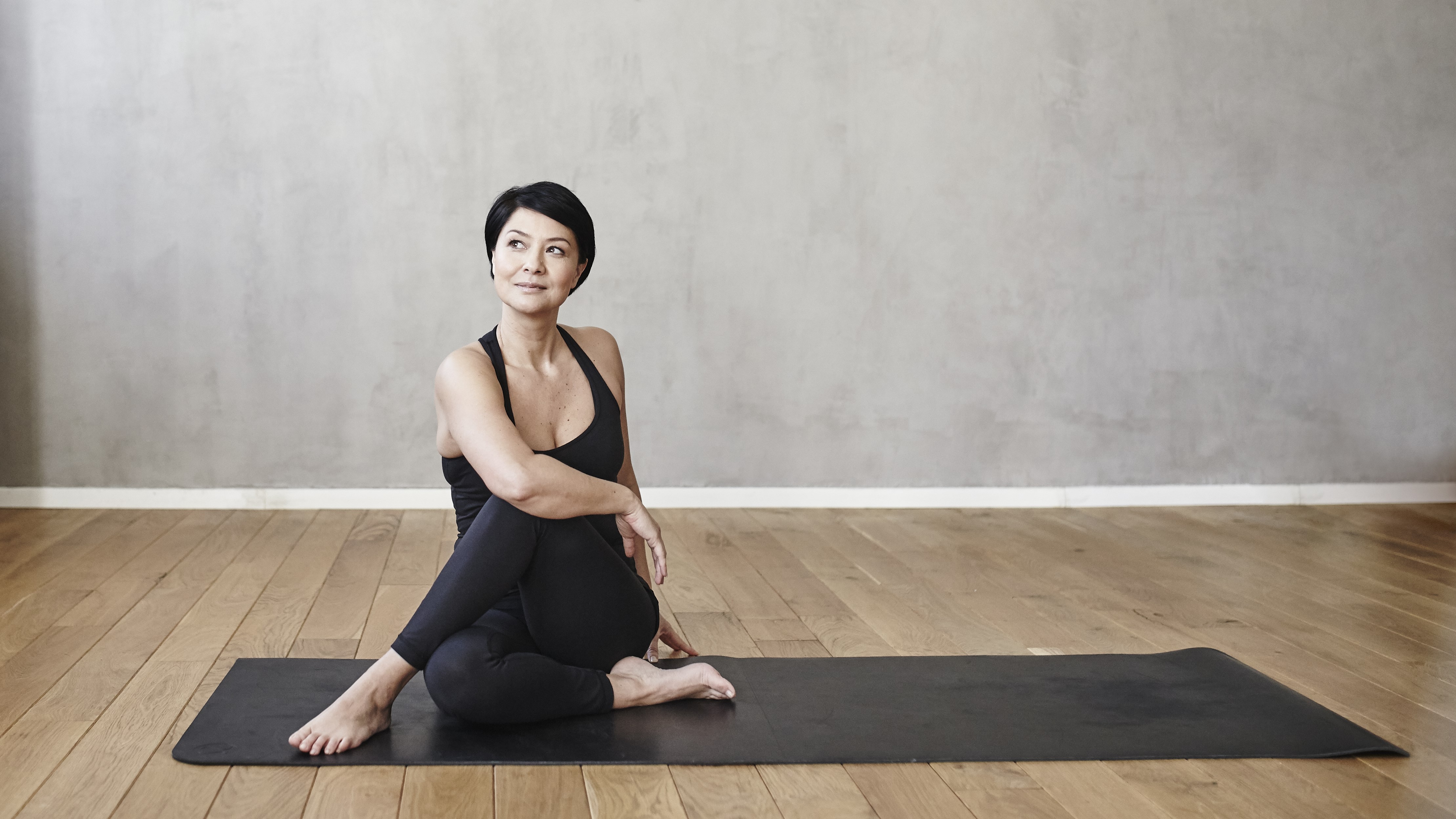

Turning to yoga for back pain isn't a quick fix, but spending some time each day gently stretching your body can help relieve muscle tension, increase flexibility and improve your overall wellbeing.
And while your first thought might be to use over-the-counter medication for back pain, for long-term strengthening and flexibility—which will help keep your back healthy and prevent recurring pain—exercise is key.
Could the answer to your back pain be as simple as investing in one of the best yoga mats, and rolling it out every day for a quick workout? “Not only can certain yoga postures help to relieve back pain, but yoga can also be a great preventative tool, too,” says yoga instructor, Hannah Barrett. “It helps you build strength and suppleness while working on reducing stress levels and creating calm. Interestingly, stress can also be a factor in back pain.”
As with any new exercise routine, especially if you're targeting a specific pain, you should speak to your doctor before you start. They will be able to advise you if trying yoga for your back pain is a step towards finding relief, or if other exercises and treatments are more suitable.
How effective is yoga for back pain relief?
The benefits of yoga are endless, from improved flexibility to a better mind-body connection. But how beneficial is yoga for back pain?
“Yoga can help those who experience back pain by improving back strength and suppleness, as well as encouraging correct spine alignment,” explains leading yoga teacher, Sarah Highfield.
“Yoga for back pain relief works by gently stretching the muscles in the back and shoulders, which releases and soothes tension in the area. At the same time, yoga also strengthens the back muscles, which reinforces core stability. It’s good to remember that, as a general rule, yoga forward folds stretch the back of the body, yoga backbends open up the front of the body, and yoga twists are great for spine mobility.” It's one of the reasons why the practice is so effective for better posture.
Sign up to our free daily email for the latest royal and entertainment news, interesting opinion, expert advice on styling and beauty trends, and no-nonsense guides to the health and wellness questions you want answered.
Beginners yoga for back pain
Yoga can help relieve both upper and lower back pain but, depending on the type of back pain you're experiencing, there are different styles of yoga that may work best for you. The practice can help target back muscles specifically and increase flexibility.
“If your back pain is caused by a little tightness in the back muscles, a mild vinyasa flow style of yoga may work well for you as it will get your body moving and flowing,” says Sarah. In vinyasa yoga routines you can expect to move smoothly at pace through a range of different yoga poses, connecting each movement with the breath.
“If your back pain is more complicated, my advice is to practice a slow and soothing form of hatha yoga," Sarah suggests. This style of yoga is more static than vinyasa yoga and involves a range of poses that are practiced much more slowly and held for longer.
When it comes to yoga for beginners, Sarah suggests starting slowly and making full use of yoga equipment for extra support. “If you’re a beginner, my number one tip is to start slow and make use of yoga props such as straps and blocks,” says Sarah. “Yoga props help you to practice with more stability and create extra space within your body. They're also essential if you're a beginner and need to start off slowly and cautiously.” This is where investing in one of the best thick yoga mats is a good idea as it provides you with an extra stable base and will help avoid any slips as you move through the poses.
If you can't make it to a yoga studio or aren't ready to take an in-person yoga class, there are lots of yoga routines on Youtube. Yoga with Adriene is particularly popular and with a range of classes to suit every level, you can ease into the movements and gradually progress to more challenging practices.
However, if you feel pain or discomfort at any point during your yoga practice, stop. “You don’t want any of the yoga poses to exacerbate your symptoms so please stop if they do,” says Hannah. "If your back pain is severe, ongoing or you're unsure of what is causing it, then I advise you to rest and seek professional medical help," Sarah adds.
The best yoga poses for back pain
“Depending on what type of back pain you are experiencing, different yoga poses will work best for you, so it’s always worth attending a yoga class so you can talk with your yoga teacher who will be able to advise,” says Sarah.
However, if you're unable to take a yoga class and want to know the best yoga poses for back pain relief that you can do from the comfort of your own home, here Sarah and Hannah share their top picks.
*Please note, poses may differ slightly between images and descriptions
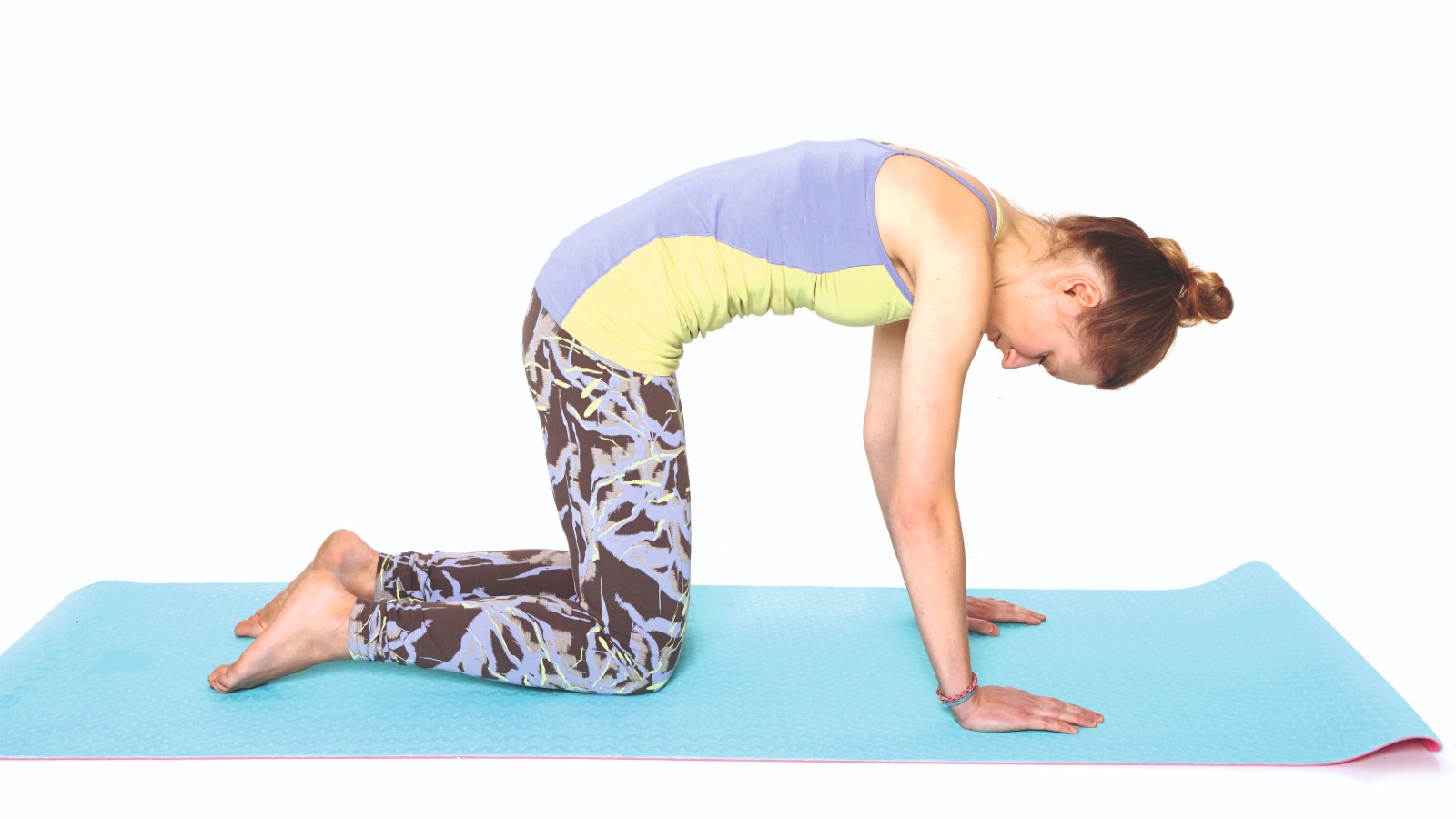
1. Cat-cow
How to do it: "Start on all fours, check that your wrists are under your shoulders and your knees are under your hips," says Sarah. "With an inhalation lift your head and hips, letting your stomach drop down. With an exhalation drop your head and hips and draw your navel in towards your spine. Continue like this, allowing your spine to move with your breath. Do this for five deep breaths and then come out of the pose."
Why this helps: This simple movement offers a gentle stretch for both the back and front of your body. If you can't sleep at night, it's also great for bedtime yoga to help you loosen your muscles and relax both your body and mind before bed.

2. Seated twist
How to do it: "Start by sitting with one leg in front of you and the other behind you, with both knees bent," says Sarah. "Then twist in towards your front knee, placing your opposite hand on the knee and your other hand on the floor. Each time you inhale, lengthen your spine, and each time you exhale, twist a tiny bit more. Make sure you keep lengthening your spine as you gently twist, this is so you don’t compress your spine." Hold for five deep breaths and then repeat on the other side.
Why this helps: The spinal twist will stretch your spine, and the small muscles between your vertebrae. It's great for maintaining spine mobility and opening up the chest so you can breathe deeply.
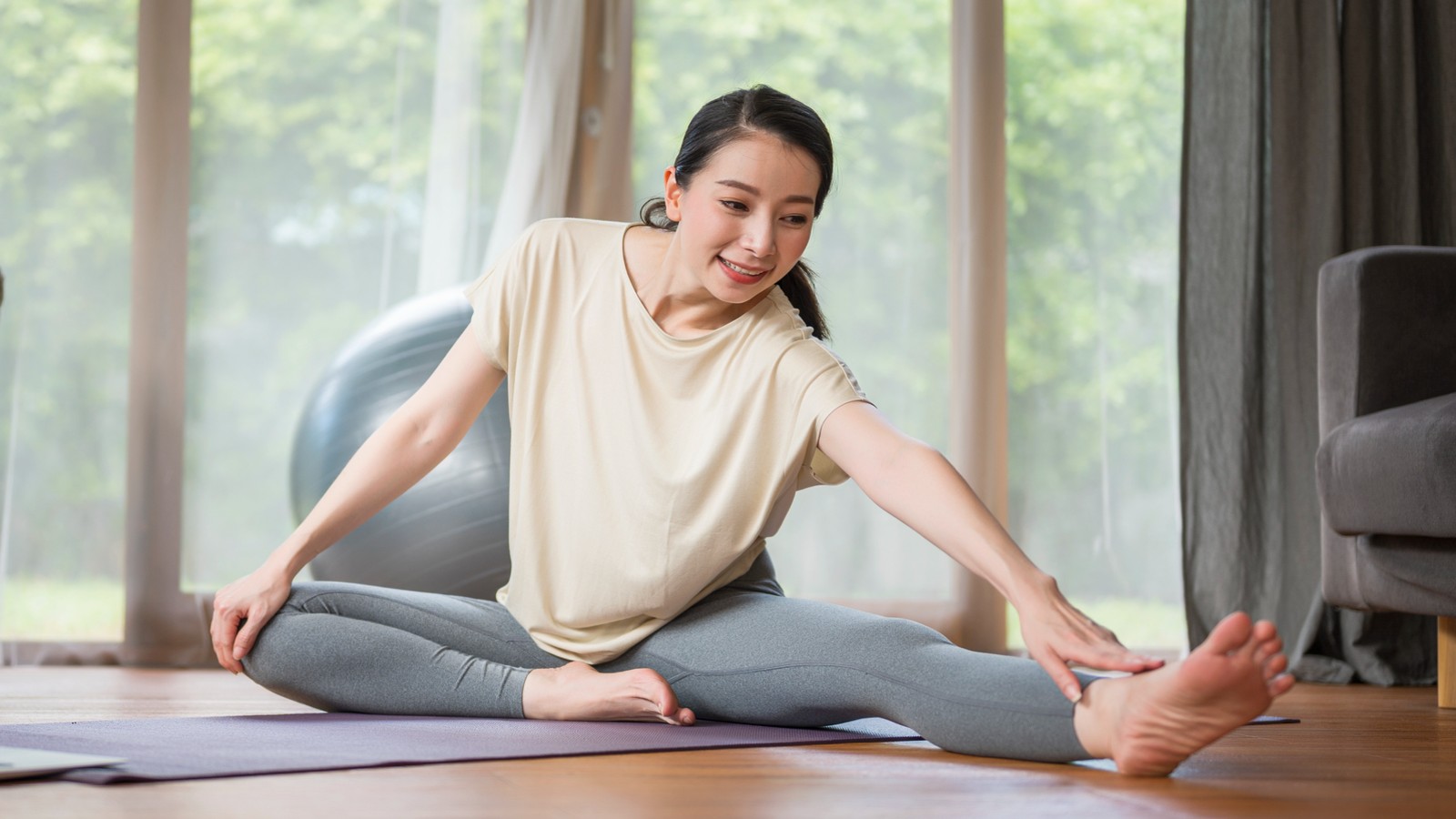
3. Head-to-knee
How to do it: "Extend one leg out in front of you and place the opposite foot on the inner thigh of your extended leg," says Sarah. "Keep your extended leg straight and actively flex your foot. Place your fingertips on either side of the extended leg. Inhale to lengthen your body, and exhale to fold forward. Hold for five deep breaths and then repeat on the other side."
Why this helps: "Back pain is often linked to other parts of your body with tight hamstrings being a common trigger," says Sarah. "This pose will gently help to stretch your hamstrings, lengthening the muscles in the back of your leg, as well as stretching your spine."

4. Bridge
How to do it: “Lying on the back with the feet hip-distance apart and a hands distance from the body, exhale and slowly peel the hips off the ground engaging the glutes and lifting only as far as you can keep the spine neutral—this isn’t a backbend, be mindful the lower back doesn’t overarch and the ribs don’t flare,” says Hannah. “Hold for five slow breaths then gently release.”
Why this helps: Holding this position helps to strengthen low back muscles and glutes while providing stability through the pelvis and core strength.
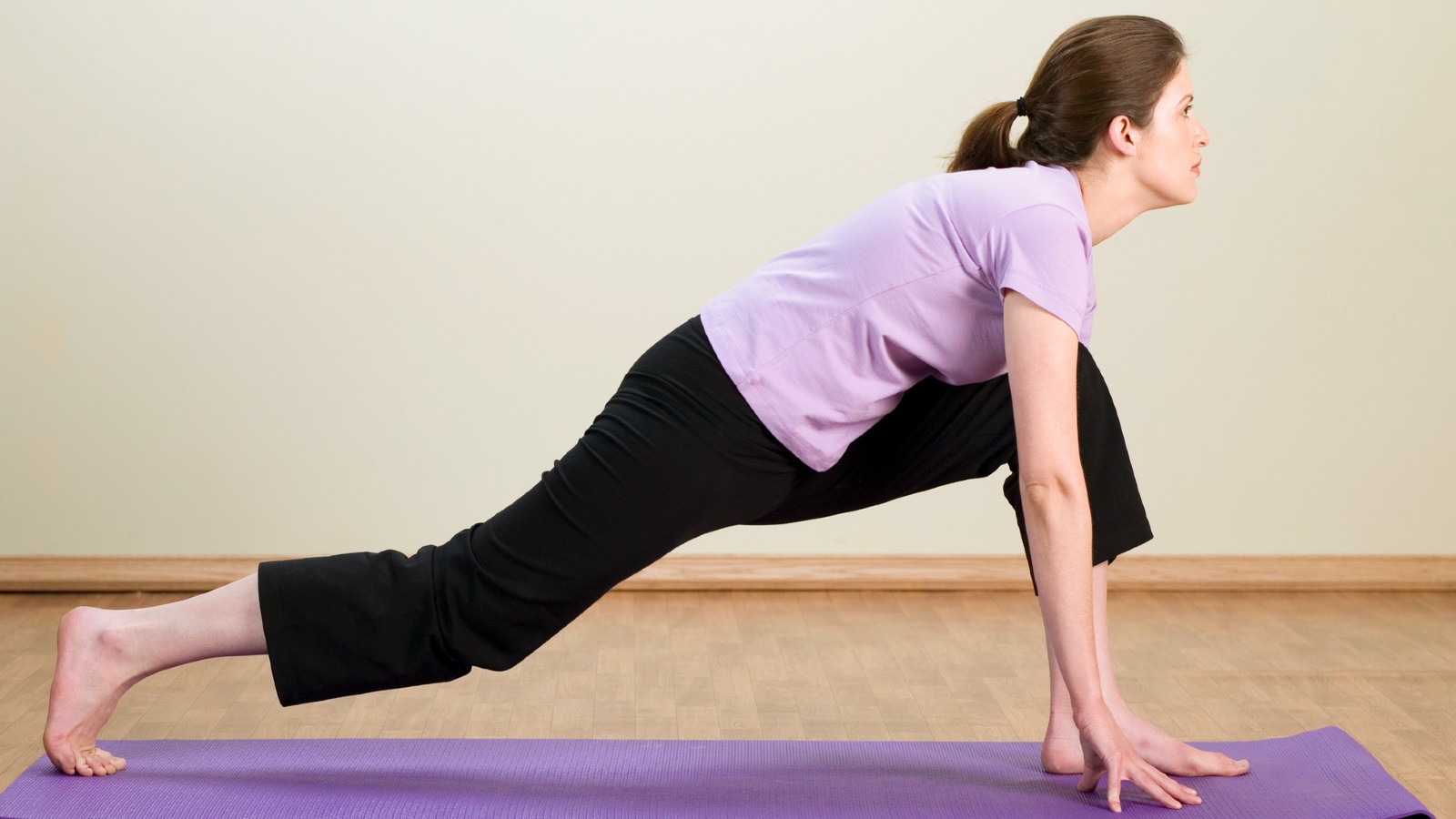
5. Low lunge
How to do it: “Step the right foot forward and come onto the left knee—you can place a blanket under the knee if it's more comfortable,” says Hannah. “Ensure the left knee is under the left hip, the right foot is under the right knee and the glutes are activated. Reach the arms up to the sky or place them on the front thigh as you find length in the spine and reach the crown of the head upwards. The spine and pelvis are neutral, this isn’t a backbend. Take five slow breaths and then repeat on the other side.”
Why this helps: The low lunge can help build strength and stability in the lower back and provide back pain relief. It's a great one for doing first thing in the morning to stretch out your muscles when you get out of bed.
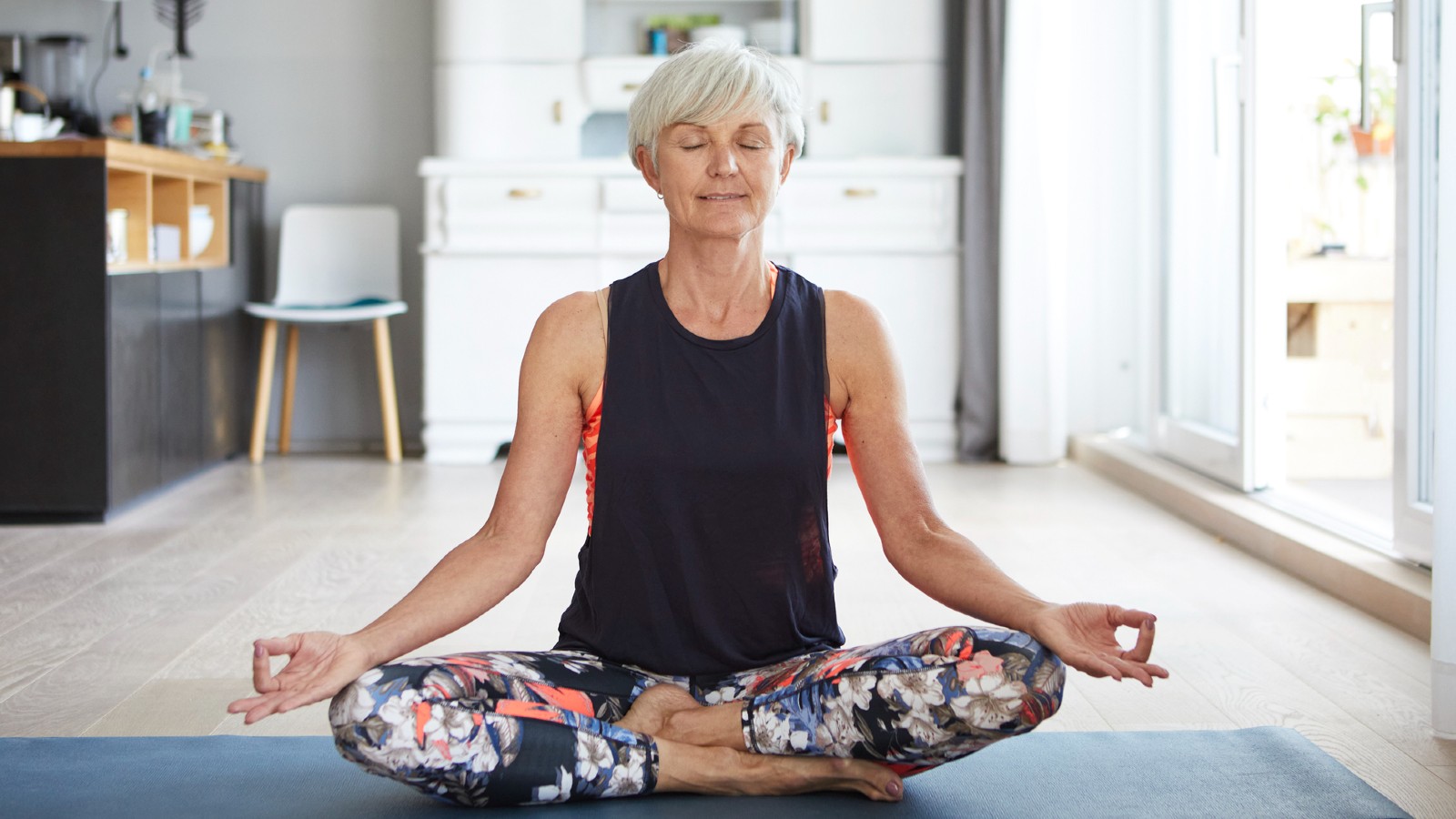
6.Three-part breath
How to do it: “Come into a comfortable seated position and gently close the eyes,” says Hannah. “Inhale through the nose, feeling the belly and ribs gently expand all the way up to the collarbones. Exhale slowly through the nose feeling the body release. Try this for ten rounds and, before opening the eyes, take a moment to check in with how it makes you feel.”
Why this helps: The three-part breath can help relieve muscle tension and better wellbeing. It's a great pose to do alongside sleep-guided meditations in the evening, relaxing the mind and letting tension melt away from the body will help you sleep better and allow you to let go of any stress that's built up in your body throughout the day.
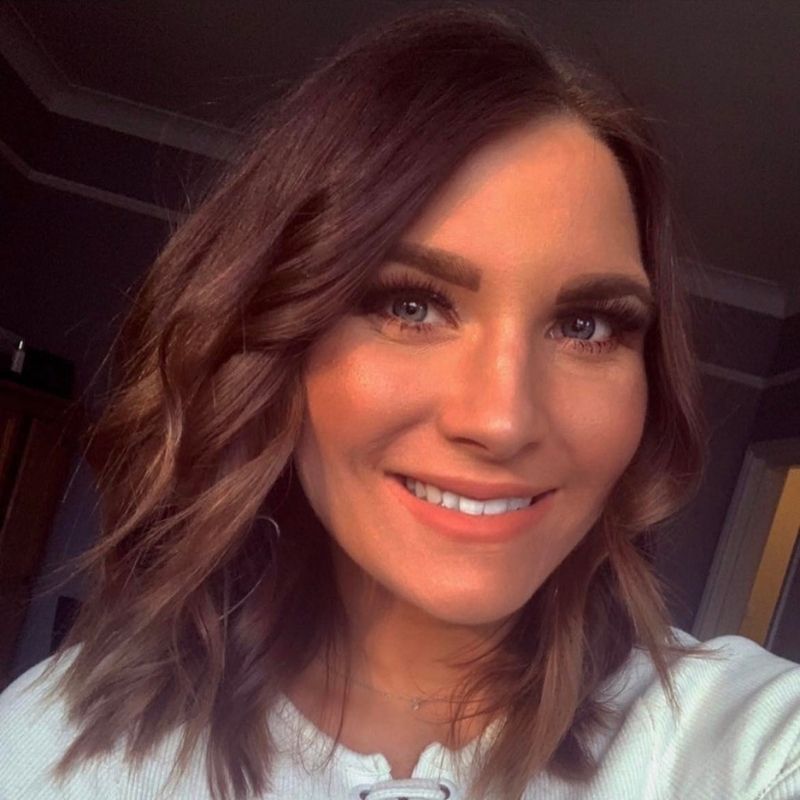
Rose Goodman is a health writer across print titles and websites including woman&home.
Prior to pursuing her career as a writer, Rose obtained a degree in psychology and went on to work in adult mental health for five years, specifically working with people diagnosed with eating disorders, anxiety, depression and OCD. Mental health and wellbeing is something Rose feels incredibly passionate about and believes normalising the conversation around mental illness is something we should all actively strive to do.